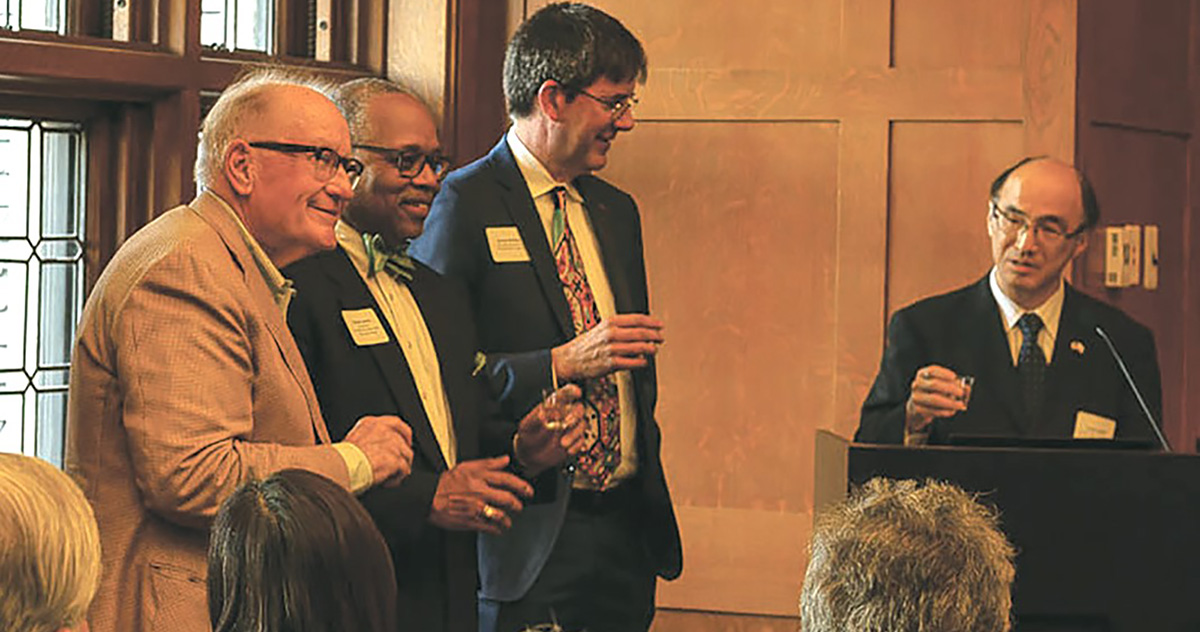DETROIT — The historic Freer House, in Detroit’s midtown, was built in 1892 by industrialist and art collector Charles Lang Freer. Today, it is also home to the Merrill Palmer Skillman Institute at Wayne State University.
Freer was an early champion of American, Asian and Middle Eastern art. His commitment to multiculturalism continues to be celebrated in the house's mission and programs, including a strong partnership with the Detroit Institute of Arts and the metro Detroit Japanese and Asian community. From Freer’s first Asian art purchase in 1897, a painted Japanese fan, until his death in 1919, he remained inspired by the beauty of Japanese paintings and ceramics.
In 1905, Freer began arranging for the donation of his entire art collection to the Smithsonian in Washington, D.C., as well as the building of the gallery to house it. More than 2,000 of his 10,000 donated works were Japanese. Thus, the Smithsonian’s first art gallery — the Freer Gallery of Art — was born. Today, it is known as the National Museum of Asian Art. Freer’s wealth, through ownership of Detroit railroad car factories, provided an endowment to the Smithsonian worth more than $100 million today.

The Freer House co-sponsored a recent lecture at the Detroit Institute of Arts (DIA), “Still Making Waves: Charles Lang Freer and the Waves at Matsushima,” highlighting Freer’s pioneering role as a world-renowned collector of Japanese art. Presenter Frank Feltens, Ph.D., curator of Japanese art at the National Museum of Asian Art, outlined the unique contributions of Freer and Detroit to the introduction of Japanese art and culture into the U.S. in the late 19th and early 20th centuries. Waves at Matsushima, a treasure of the museum’s collection, is a large six-panel screen painted by Tawaraya Sotatsu in the early 17th century. That screen and other Japanese works in the U.S. are now being reproduced through an extensive technological and hand-crafted process perfected by Canon’s Tsuzuri Project to allow more people to fully experience the art.
The lecture drew about 200 attendees and was co-sponsored by the Japan America Society of Michigan and Southwestern Ontario, and the Friends of Asian Arts and Cultures/DIA. The Freer House hosted a post-event reception for 90 guests to celebrate the 100th anniversary of the opening of the Freer Gallery of Art. Reception guests enjoyed tours of the house as well as an assortment of Japanese food and beverages.
Freer House Director William Colburn honored the importance of the centennial in his opening remarks. “We are also celebrating the seminal role that Freer, the Freer House and the people of Detroit played in creating the nation’s first art museum, the first Asian art museum, and first art museum on the Mall in Washington, D.C.,” he said.
Consul General of Japan in Detroit, Yusuke Shindo, toasted Japan-U.S. friendship and the bonds between the Freer House, Wayne State University and Japanese culture. “Thanks to Freer and the work of the museum curators, Waves at Matsushima has even become an international icon,” he said. He thanked WSU for being the guardian of many Japanese-Detroit links via the Freer House and Yamasaki buildings on campus. “These links remind us of what Americans and Japanese can accomplish together,” he said.
Derrick Redding, chair of the Japan America Society, expressed deep gratitude for the existence of the Freer House, “where Sotatsu’s screen was brought to America.” He cited both the Merrill Palmer Skillman Institute and WSU’s amazing stewardship of the house over so many years while appreciating the ongoing challenge of maintaining this important historical property. “The Freer House is important to Japan-U.S. relations here because it stands at the very beginning of the Japanese-American connection in Detroit,” he said.
Honored reception guests included WSU Board of Governors Chair Mark Gaffney, Consul General of Canada Colin Bird, president of the National Association of Japan America Societies Andy Wylegala, and Detroit’s Honorary Consul General of South Korea David Roden. WSU was also well-represented by Patrick Lindsey, vice president for WSU government affairs; Hasan Elahi, dean of the College of Fine, Performing and Communication Arts; and Ahmad Ezzeddine, vice president for academic student affairs and global engagement.
Liseann Gouin, president of the Japan America Society introduced Feltens, a specialist in Japanese painting of the late medieval and early modern eras. The cultural and architectural associations between the U.S. and Japan in Detroit are important, she said. “These help to make Japanese people working in industry here feel at home in Michigan.”
TOP PHOTO: Frank Feltens, Ph.D., curator of Japanese Art at the National Museum of Asian Art, presents “Making Waves” at a DIA/Freer House event.
